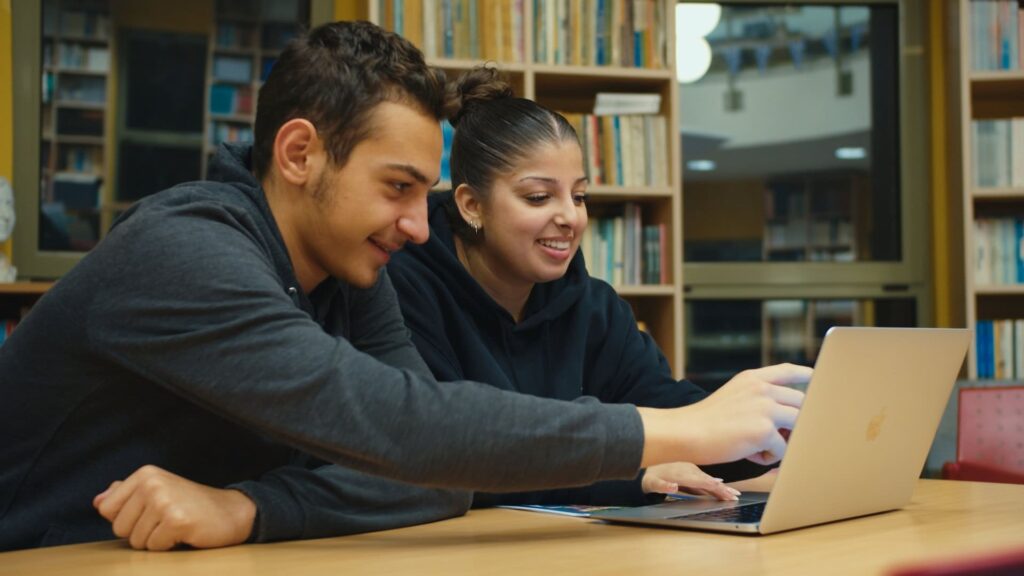In the past five years, the conversation around K-12 education has shifted dramatically from “what subjects are we teaching?” to “what skills are we building?”
And nowhere is this more evident than in international hybrid learning, where online models are empowering students to master the power skills that today’s universities and employers are desperate for.
Today, power skills – critical thinking, cross-cultural fluency, self-management, and adaptability – are at the top of every hiring manager’s list. What’s driving the shift? AI is rapidly automating routine tasks, but it can’t lead a team meeting, navigate a conflict, or spark innovation.
As the Financial Times recently reported, AI is pushing employees’ work toward “higher-value, human-centric tasks.” In response, companies are redesigning roles and urgently seeking employees who are not only tech-savvy but also resilient, adaptable, and ready to lead.
Today’s students will need power skills to succeed in the modern world. These aren’t optional, they’re essential. And hybrid learning environments, especially those built on US curriculum frameworks, are producing them at scale.
Critical thinking: learning that isn’t About memorisation
Hybrid learning challenges students to solve real problems, not just repeat facts. Courses like AP® Computer Science and Intro to AI require students to think analytically, connect ideas, and apply what they’ve learned.
In a well-designed hybrid course, questions aren’t just factual. Teachers employ critical thinking questions such as, “why do you think this is the best approach? What makes you think that?” or “what might be a better solution?” These are questions that encourage students to evaluate, compare, and defend their thinking.
Hudson Global Scholars student Guillermo Oropeza of Mexico shared that taking hybrid AP® courses helped him to think critically, test solutions, and refine his logic. “I like to challenge myself, and the program helped me do that,” he said. “I definitely felt like I was outside my comfort zone.”
When students encounter unfamiliar topics in a second language, as many Hudson students do, their engagement tends to deepen. They aren’t just consuming content but analysing information through the lens of their own experience and using new insights and skills gained to redefine their future.
Communication: more than just language fluency
In the international workplace, the ability to communicate clearly, collaborate across cultures, and self-manage is the real differentiator.
In the global classroom, communication extends beyond English mastery. It’s about listening, collaborating, presenting ideas clearly, and building relationships across cultures. Our students engage in real-time discussions, submit reflective writing, give feedback on peer work, and participate in global clubs.
Rania Angelis at Rodion Paideia School in Greece notes that students often form friendships through online courses and club activities. As coordinator of the hybrid program with Hudson, she observes that these connections often broaden students’ worldview and help them significantly improve their casual and formal communication skills.
Angelis describes a student who met a Turkish friend through Hudson’s Best Buddy Club. The two teens realised they had more in common than they had expected and formed a strong bond. This summer, the girls will meet in person for the first time.
“This is a friendship that never would have happened in a traditional classroom,” says Angelis. “The student from my school was shy at first, but this helped her come out of her shell and communicate more.”
Cross-cultural connections, such as this, aren’t mere side benefits. They are at the core of learning how to communicate in today’s interconnected world.
Self-management: a must-have in today’s workplace
The modern workday is rarely linear; professionals juggle multiple projects, digital distractions, and global collaboration across time zones. That makes strong time management a professional necessity. Even with AI tools at their fingertips, employees still need the judgment to decide what matters most and when.
Traditional schooling can limit students’ growth in personal time management or mask students’ struggles in this area. Schedules are defined. Teachers remind them of deadlines. In a hybrid program, time management skills are developed and reinforced. If a student doesn’t keep up with classwork, they feel stressed, and their behaviour changes.
“The first year, I left everything until the end, and the last two months were like hell,” says Guillermo. “But I learned from that. Now I plan ahead, stay organised, and really manage my time.”
This isn’t failure – it’s growth. Students in our programs learn to make schedules, prioritise tasks, meet deadlines, and ask for help. They have a teacher from the US who checks in regularly and a local coordinator at their school. But the student is in the driver’s seat – and that’s by design.
We’ve seen this self-management translate to stronger college readiness and more confident transitions to international universities.
Adaptability: the edge that makes a student future-proof
If recent years have taught us anything, it’s that change isn’t a phase – it’s the new normal. Whether it’s emerging technologies, economic shifts, or global events, the pace of change is only accelerating. Today’s students – and tomorrow’s professionals – need the mindset and skills to adapt quickly, stay steady under pressure, and thrive in uncertainty.
Students who can shift gears, learn new tools, and thrive in unfamiliar environments will lead the future workforce. That’s why hybrid education is a powerful training ground for adaptability.
In a hybrid setting, students don’t just learn one way – they engage with a variety of learning tools, including videos, live sessions, interactive tools, and self-paced modules. This variety requires them to adjust to different teaching styles and platforms, often within the same course.
Teachers model flexibility by encouraging experimentation and normalising the idea that learning doesn’t always follow a straight line. Their feedback nudges students to rethink approaches, revise their work, and try again – skills that translate directly to a fast-changing workplace.
“Having teachers who were student-focused in their teaching style was a wonderful help,” says Kevin, a Hudson student from Vietnam. “The independent learning style required by my courses was a different experience for me, but my teachers helped me learn how to study and be more productive and self-directed as a learner.”
Over time, students become more confident navigating the unfamiliar, which is the heart of true adaptability.
From power skills to powerful futures
In a world where job titles barely last a decade, power skills are the constant. Critical thinking, cross-cultural fluency, self-management, and adaptability aren’t just HR buzzwords – they’re the foundation of lifelong success. These are the skills that help students thrive in college, lead global teams, and navigate the unknown with confidence.
As education leaders, we must ask: Are our programs building the skills students need to thrive in an English-speaking global economy? If not, how can innovative models like hybrid learning help us close the gap?
The answer is clear: hybrid learning doesn’t just teach information. It teaches how to thrive.


Author bio: Dr Patricia Hoge is the chief academic officer at Hudson Global Scholars and an international expert on curriculum design, hybrid education, and 21st-century skills development.

